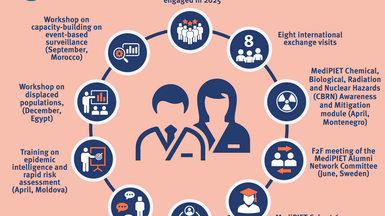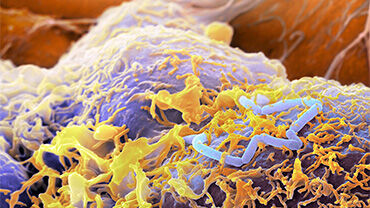ECDC marks World Hepatitis Day on 28 July
Unknown, undiagnosed, untreated - hepatitis affects millions of people around the world but as many infections are accompanied by no symptoms, the disease is often not diagnosed. Untreated chronic infection with hepatitis B and C may progress to liver cirrhosis or cancer.
Unknown, undiagnosed, untreated - hepatitis affects millions of people around the world but as many infections are accompanied by no symptoms, the disease is often not diagnosed. Untreated chronic infection with hepatitis B and C may progress to liver cirrhosis or cancer.In the European Union and European Economic Area countries (EU/EEA), each year over 14,000 hepatitis B diagnoses are notified. Although there has been a downward trend in acute cases of hepatitis B, due to effective vaccination programmes, the numbers of chronic cases remains high. Hepatitis C shows a greater disease burden with over 26,000 diagnoses reported across Europe every year.ECDC aims to strengthen the surveillance of hepatitis B and C at EU level to assist in the better understanding of the epidemiology of these diseases and in the evaluation of prevention and control strategies. In 2011, ECDC developed a framework for enhanced surveillance to gather comparable data and has recently completed the first data collection across the EU/EEA. The first ECDC surveillance report on hepatitis B and C will be published in early 2013.ECDC is developing a framework for the prevention and control of hepatitis B and C across EU countries. This framework aims to support national health programmes in reducing the associated disease burden.World Hepatitis Day on 28 July was introduced by the World Health Assembly in 2010 to raise awareness about viral hepatitis and to stimulate preventive and control measures of this disease. The World Health Organization (WHO) estimates that around 2 billion people worldwide have been infected with the hepatitis B virus (HBV) and around 150 million patients suffer from chronic hepatitis C (HCV). Moreover, 78% of liver cancer cases are linked to viral hepatitis. Hepatitis is an inflammation of the liver and is most commonly caused by a viral infection. There are five known hepatitis viruses, referred to as types A, B, C, D and E. Hepatitis A and E are typically caused by ingestion of contaminated food or water. Hepatitis B and C are blood-borne viruses. HBV can be transmitted through the sharing of contaminated needles when injecting drugs, sexual exposure and from mother to child at birth. HCV is transmitted predominantly through the sharing of contaminated needles in people who inject drugs.
Read more: More information on hepatitis B







